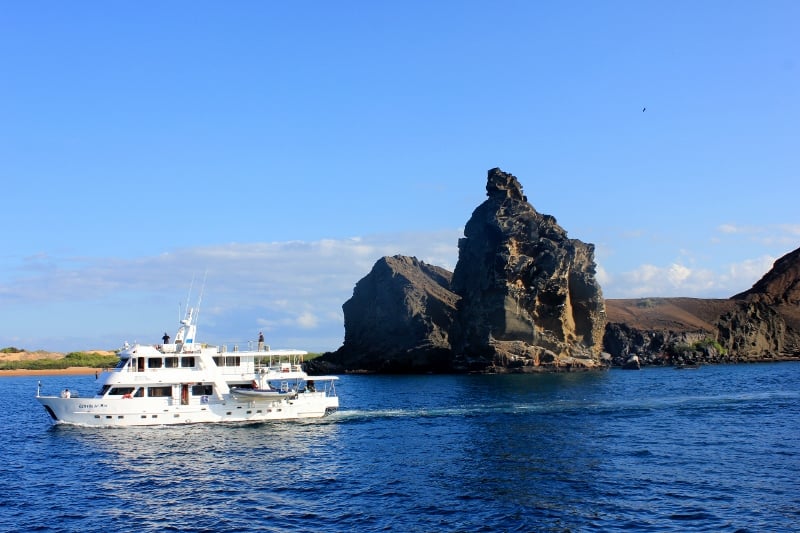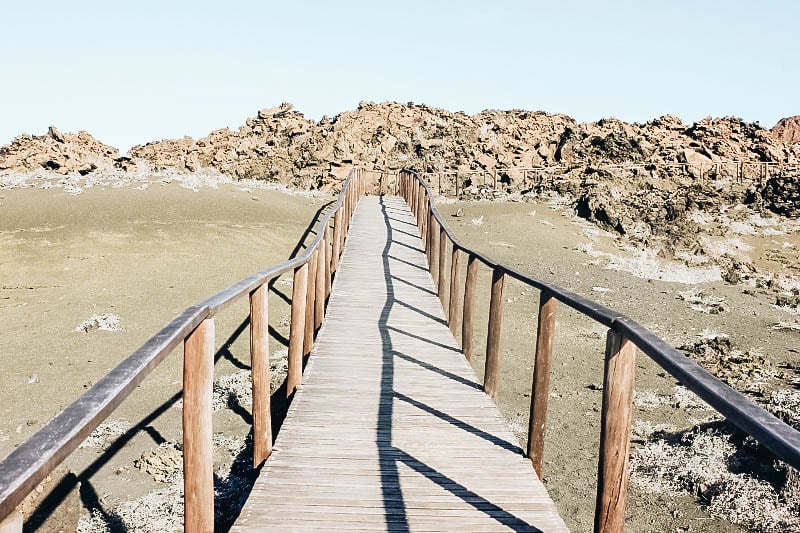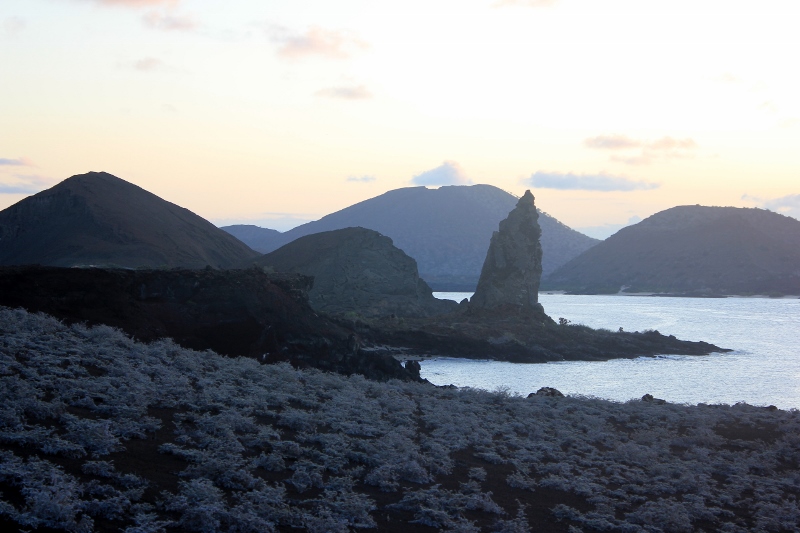When you are traveling around the world you quickly realize that many attractions require the need for climbing of some sort. When I heard that it was 374 steps uphill to the peak of Bartolome Island in the Galapagos, I began having flashbacks of the 463 steps to the top of Florence’s Duomo.
Climbing that wasn’t pretty. It was where I learned that a 78-year-old great grandmother was in better physical shape than me. Painful. On so many levels.
But, the peak of Bartolome Island was known to have the most perfect view of the famous Pinnacle Rock. There was no way that the avid bucket lister in me would miss scaling this volcanic cone to see a unique perspective of one of the most photographed natural structures in the Galapagos Islands.

So the journey began to the land where the human population is ZERO…
We took a panga from our home on the water, Ecoventura’s Letty yacht, and disembarked on the dock of Bartolome Island where a sea lion basking in the sun greeted us. The islet, located in Sullivan Bay to the east of Santiago Island, was barren besides two small groups of visitors and a few lazy lava lizards.
The gang that I was with eagerly started to ascend the 600 meter trail, a planked walkway which protects the lunar-like landscape from human erosion.

The beginning of the hike had the slightest incline, which allowed me to enjoy the mostly brown land that looked like it was straight from an episode of Star Trek.
A variety of volcanic formations lined the trail: spatter cones, lava tubes and lava bombs.
We even made a pit stop in order to hold a large lava rock, which looked as if it would be incredibly heavy, but really weighed mere ounces.

This was looking like something straight out of a cartoon.
Continuing on, the path steepened. The smooth walkway turned into stairs and my gasping for breath increased. I knew this was coming.
I stopped to “take photos”, a disguise for getting a moment to catch my breath.

After about a half hour we reached the top. The summit not only rewarded us with a spectacular view of Pinnacle Rock, but also Daphne Major, Daphne Mindor and the rest of Santiago Island.

As always when climbing things while traveling, the view from the 114 meter summit was worth every step.It turned out to be a great addition to my list of the top things to do before you die.
Traveling Soon? Use my Favorite Resources for Booking Your Trip!
Book Your Flight
Skyscanner is my favorite flight search engine, because it checks dozens of airlines so you can easily find the best fare deals. You can also select ‘cheapest month’ to find the lowest fares for your destination (I use this all the time!).
Book Your Accommodations
I use both Booking.com and Expedia for hotels, because each offers a couple different hotel choices and I like to compare the reviews on each one. If you have a group or are looking for more of a home atmosphere, head over to VRBO or AirBNB that has houses, apartments and even just a room for rent in every price range.
Book Your Rental Car
If love the freedom to explore like I do, driving from place to place is the best option! I always book with Discover Cars for the best prices and top brand options.
Book Some Fun Tours!
Viator and Get Your Guide are my go-to search engines for cool bucket list experiences! Each one can have different tours, so check both—why limit yourself, right?
Don’t Forget Travel Insurance
Travel can be unpredictable. Whether it’s a last-minute cancellation, an injury, or (ugh) theft, things happen. That’s why I recommend never leaving the country without travel insurance. Here are my faves: Safety Wing and World Nomads.
Get Packing & Travel Essentials Ready
Check out the Bucket List Journey Amazon Store to find all my favorite travel essentials. Everything from Packing cubes, to travel adapters and toiletry containers to walking shoes.
*Lastly, check travel.state.gov for visa requirements and safety information.
You Might Also Enjoy
21 Photos to Inspire Your Galapagos Bucket List
See Galapagos Penguins in the Wild
See the Blue-Footed Booby Mating Dance in the Galápagos Islands







The Galapagos archipelago is made up of a lot of intriguing islands, but one of the most scenic is arguably Bartolome Island.
Wow amazing, I can spend my whole live over there.
awesome photography, and nice to see your work of exploring travel treasures